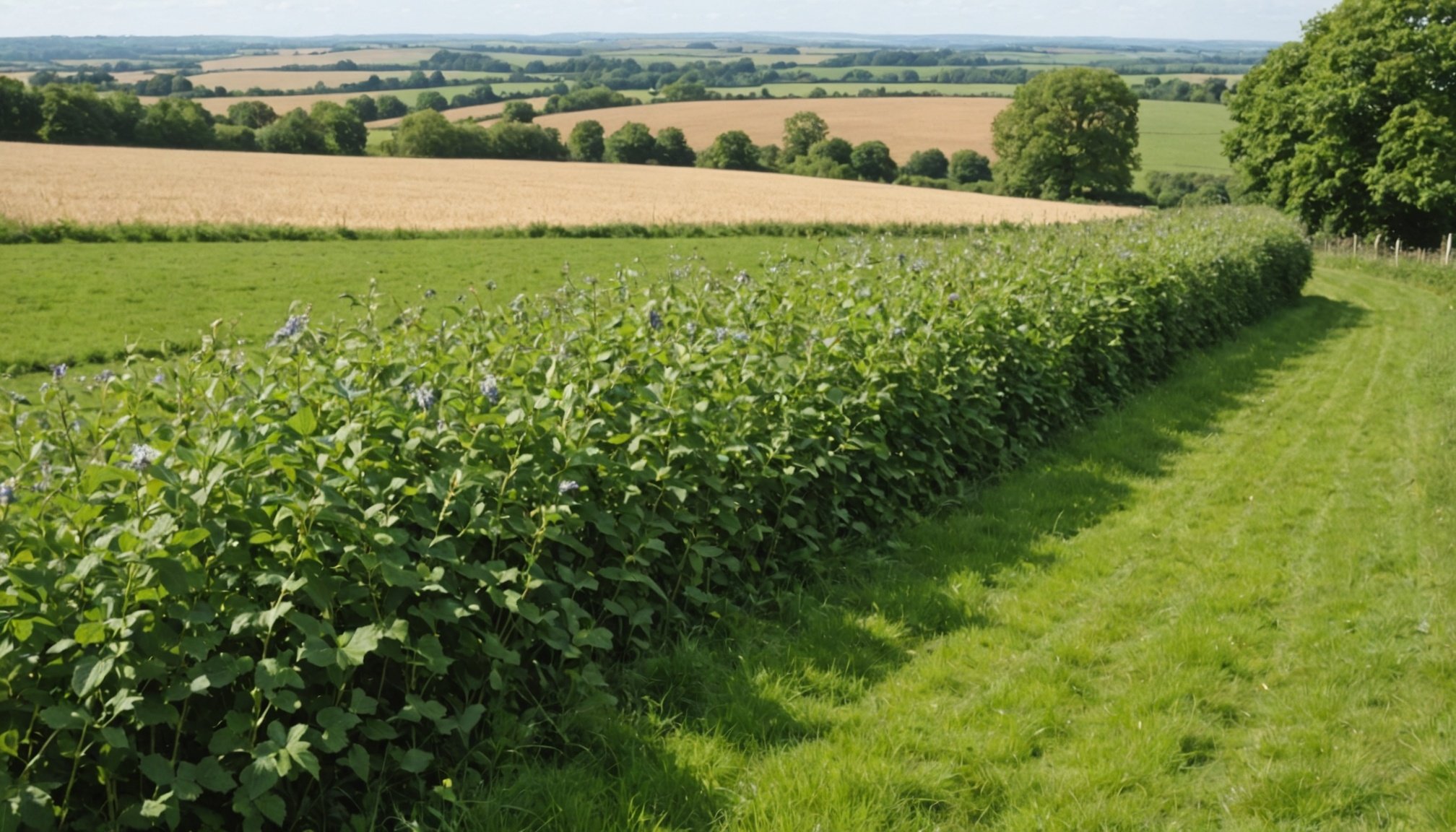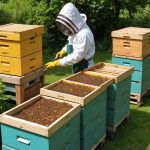Effective Hedgerow Management Techniques
In recent years, hedgerow management has evolved beyond traditional methods, embracing innovative practices that significantly enhance biodiversity. Understanding the difference between old and new management techniques is crucial. Traditionally, hedgerow management involved regular trimming and clearance to maintain boundaries. However, these methods sometimes neglected the ecological potential hedgerows hold.
Modern practices focus on biodiversity enhancement and promoting farming ecology. This involves adopting techniques that encourage species diversity and provide a habitat for wildlife. By allowing wildlife corridors and implementing varied cutting patterns, landowners can create a more vibrant ecosystem.
Dans le meme genre : Building Bridges for Nature: Strategies for UK Communities to Establish Wildlife Corridors Linking Isolated Habitats
Species diversity plays a pivotal role in hedgerow restoration. Incorporating native species not only supports local flora and fauna but also strengthens the resilience of these ecological structures. Practical techniques include:
- Variable cutting heights to accommodate different species.
- Staggered trimming schedules to allow flora to bloom and fruit, providing food for insects and birds.
- Planting a mix of shrubs and trees to support various animal life.
Enhancing species diversity not only improves biodiversity but also contributes to sustainable farming practices. Implementing these strategies thoughtfully results in healthy hedgerows that foster a thriving ecosystem, beneficial to both nature and agriculture.
A lire aussi : Empowering UK Communities: Simple Ways to Support the Preservation of Local Orchid Species
Case Studies of Successful Hedgerow Management
Innovative practices in hedgerow management have transformed landscapes across the UK, showcasing how modern techniques can complement traditional methods. Below are three standout success stories illustrating how innovative practices have been effectively implemented.
Example 1: Riverford Organic Farms
Located in Devon, Riverford Organic Farms adopted innovative practices by incorporating native tree planting alongside existing hedgerows. This initiative enhanced biodiversity, increased natural pest control, and supported local wildlife, leading to healthier crops and reduced reliance on chemicals.
Example 2: The Knepp Estate
The Knepp Estate in West Sussex embraced a rewilding approach, allowing hedgerows to grow naturally. By prioritising biodiversity, the estate witnessed a remarkable resurgence in native species, attracting national attention for its unique success.
Example 3: Hope Farm, RSPB
In Cambridgeshire, Hope Farm has become a beacon for UK farmers by integrating hedgerow management with precision agriculture. Their focus on community engagement ensured widespread support, and biodiversity improved significantly, evidenced by increased bird populations.
Through these examples, it’s clear that the implementation process benefits from understanding the unique needs of each area and involving the local community. These stories highlight the significant positive impact innovative hedgerow practices can achieve for sustainability and ecological health.
Benefits of Enhancing Biodiversity Through Hedgerows
Hedgerows play a crucial role in supporting wildlife and pollinators by providing habitats that promote ecological services. These natural borders significantly contribute to agrobiodiversity by hosting a variety of species that thrive in their protection, thereby fostering a robust ecosystem. The interconnected environment that hedgerows create supports a rich tapestry of life, which is vital for the health of agricultural landscapes.
The impact of enhanced biodiversity through hedgerows is evident in improved crop yields and sustainable pest control. Diverse species populations in hedgerows can naturally manage pest populations, reducing the need for chemical interventions. This balance allows crops to flourish, boosting yields over time, which is a prime ecological service for sustainable farming practices.
Moreover, hedgerows contribute to carbon sequestration and enhance soil health. Their dense vegetation acts as a carbon sink, effectively capturing and storing carbon dioxide. Simultaneously, the roots of hedgerow plants stabilize soil, preventing erosion and promoting nutrient cycling, which fosters richer, more fertile soil. These environmental benefits underscore the importance of hedgerows in maintaining both agricultural productivity and ecological balance.
Challenges in Hedgerow Management
Hedgerow management difficulties present several common obstacles for farmers. One significant concern is the presence of invasive species which can disrupt local ecosystems and require additional resources to control. These species often outcompete native plants, altering the natural balance and reducing biodiversity. Farmers also express concerns regarding the impact of climate change. Shifts in weather patterns can lead to unforeseen ecological barriers, such as increased pests or diseases that were previously not an issue.
Another critical challenge is the financial constraints associated with managing hedgerows. Implementing effective strategies can require substantial investment, both in terms of money and time. Farmers may struggle to justify the costs involved, especially when the immediate economic benefits are not apparent. Furthermore, time constraints can hinder farmers’ ability to prioritize hedgerow maintenance amidst other pressing agricultural duties.
Addressing these challenges requires a strategic approach. Possible solutions include seeking financial aid or subsidies, adopting environmentally friendly practices, and collaborating with ecological experts to ensure sustainable management practices. By overcoming these barriers, hedgerows can continue to play a crucial role in agriculture and environmental conservation.
Policies and Grants for Farmers
Understanding agricultural policies is crucial for farmers aiming to secure funding opportunities. These policies are designed by the government to provide support to the agricultural sector, ensuring sustainable practices and profitability. An array of grants is available, with some targeting specific areas like environmental sustainability.
Overview of Available Grants and Support
Farmers can access several government support programs that promote biodiversity and support sustainable farming. These programs offer funding opportunities for initiatives such as:
- Improving soil quality and water management
- Encouraging biodiversity and wildlife conservation
- Enhancing carbon capture through innovative farming methods
Successful Navigation of Application Processes
The application process for agricultural policies funding can be daunting. Best practices include thorough research of available funding opportunities and meticulous preparation of required documentation. Early engagement with government agencies can significantly enhance the chances of success.
Insights from Policy Experts
Policy experts often highlight the evolving nature of agricultural policies. They predict shifts towards more comprehensive programs focusing on climate resilience. As the government support landscape changes, staying informed is key for farmers. Experts encourage proactive participation in policy discussions to influence future directions.
Expert Opinions and Recommendations
In the realm of sustainable agriculture, expert insights reveal a delicate balance between economic productivity and ecological preservation. Agronomists emphasize the critical role of hedgerow management in maintaining biodiversity. According to ecologists, these natural barriers serve as essential habitats for various species, promoting ecological diversity and resilience. Hedgerows are not just barriers but strategic assets in biodiversity strategies.
Integrating traditional practices, such as periodic trimming to encourage dense growth, with innovative strategies like planting native species, is recommended by experts. This combination enhances the ecological benefits while maintaining the agronomic advantages, such as windbreaks and erosion control.
Looking ahead, experts foresee the integration of technology in biodiversity management as a pivotal trend. Utilising tools like satellite imaging and AI for precision agriculture can optimise sustainable practices. These technologies offer real-time insights into ecological health and hedgerow vitality, enabling more informed decision-making. The overarching recommendation is clear: sustainable agriculture hinges on a committed approach to innovative, biodiversity-friendly practices. By following these expert insights, agriculture can pave the way for a more resilient ecological future.










